Book Reviews by Genre: Fiction
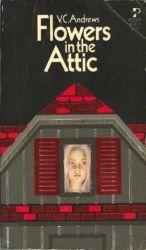
Flowers in the Attic is about the horrible life of four siblings. Before their lives were turned upside down, their father provided for them, but when he died, the mother decided to take herself and four children to her parents house. The mother was exiled by her parents for her marriage to her husband, so going to her parents for help was her last resort. When arriving at her parents house, the mother decides to hide away her children to gain back her dying fathers favor to inherit his fortune. Until the grandfather dies, the four children will be locked away in the attic and hidden from the world. This story is told through the oldest daughter Cathy’s perspective, and follows her journey with her three other siblings while living in their grandparents' attic. This was a very depressing and disturbing book with a lot of twists and turns nobody would have seen coming. If you like sad stories that do not leave your mind easily, this is the perfect book for you! Personally, I do not recommend this book if you are not prepared for a very disturbing story.
Reviewer Grade: 11
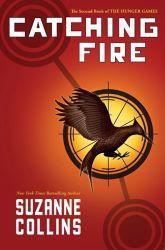
Catching Fire is the second book in the Hunger Games trilogy. After Katniss and Peeta return home from the games, they both go on the victor tour to all the districts. Before they left President Snows visits Katniss and says she still needs to be in love with Peeta so there won’t be an uprising in the districts. After that, the Quarter Quell (the 75th Hunger Games) comes along and everything changes. Katniss needs to fight for the ones she loves, and to stay alive. If you’re interested about reading Catching Fire make sure you read the first book of the trilogy, The Hunger Games. This book has a lot of good twists and turns, and kept me wanting to flip to the page to see what happens next. It was an emotional book, which keeps you on the edge. If you liked the first book I recommend reading the second!
Reviewer Grade: 8th
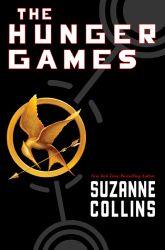
The Hunger Games follows a girl named Katniss Everdeen. She lives in a world where there is 12 districts, which are controlled by the capitol. This nation is called Panem. A very long time ago, the districts rebelled against the capitol, so the capitol created the Hungry Games. The Hunger Games is a game played each year, and one boy and girl from each district is sent to fight to the death. When Katniss’ younger sister Prim is chosen as the tribute for district 12, Katniss couldn’t let her sister go, so she volunteered to go in for her as the female tribute for district 12. Katniss and the male tribute of district 12, Peeta Mellark, are sent to the capitol to train for the games.
This was an amazing book that I recommend to everyone including new readers like myself. I’m not a big reader, but this book really had me stuck to the pages. I was up all night and couldn’t stop thinking about what is going to happen next! The Hunger Games is definitely one of my favorite books!
Reviewer Grade: 8

In the world of Aerwiar most of the mapped world had been taken over by Gnag the Nameless; a feared tyrant who was unknown to the land of Skree until he approached it with a massive army of the Fangs of Dang, who then cruised the streets and kept citizens in check. Tink, Janner, and Leeli lived in relative comfort with their mother and grandfather until they uncovered a mystery that would change their lives forever and send them on a dangerous journey across the world of Aerwiar.
I had read this book once before when I was younger but after I saw it sitting around the house I decided to reread it. I know some elements of the book might sound a little odd but that’s partly why I love it so much. It isn’t some overused plot line but a new story with its own creatures and excellent world-building. This is possibly one of my favorite book series but the first book is a little slow as it mostly sets up the story but it is still really enjoyable. Just keep in mind that the series only gets better as it goes along.
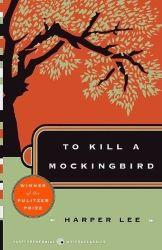
"To Kill a Mockingbird" by Harper Lee is a classic exploration of racial injustice and moral growth in Southern United States. The novel's strengths lie in its powerful narrative, addressing societal prejudices through the trial of Tom Robinson. While the coming-of-age story of Scout and Jem Finch provides a strong examination of morality, occasional pacing issues and a less engaging narrative may make it a 3/5 for some readers. Despite this, the novel's enduring relevance and impact on discussions of justice make it a worthwhile read. I found the language in the book somewhat challenging, making it less accessible for me. It occasionally hindered my overall reading experience, but was a treasure of its own!
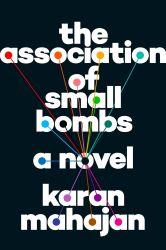
First, there was an explosion—a small bomb in a Delhi marketplace place. The Kurana boys were killed, and their friend Mansoor survives. This small bomb had devastating results on two families, and The Association of Small Bombs by Karan Mahajan reveals the interconnectedness of grief and disaster as it follows the lives of the families and the terrorists after the explosion. Mahajan confronts tough topics and raises questions about terrorism and war. It is an uncomfortable read, definitely not a book for pure pleasure. Frankly, The Association of Small Bombs is not my favorite book, nor do I believe it is meant to be. While it certainly covers hard and uncomfortable topics, it could have been written in a less dry manner. The characters also seemed to always fall on some extreme, and I feel some less extreme characters would have enhanced the novel. At least for the first chunk of the novel, the characters' names are challenging, and sometimes essential plot points are overshadowed as I attempt to remember who some characters are. That being said, it definitely prompted me to think about grief differently and about all the interconnected pieces of a single action.
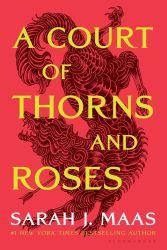
Fairies are terrifying, violent creatures; they haunt the humans’ worst nightmares. A wall and a twisted treaty are the only barriers between these terrifying creatures and the vulnerable, weak humans. However, the wall is weakening, fairies are venturing through the cracks, and the humans have long forgotten the treaty's terms.
Ferye’s family relies on her hunts, but over time, she has to venture deeper into the woods toward the wall dividing the fairies and the humans. These hunts are risky and dangerous, and it’s only a matter of time before she might have to confront a fairy. When Ferye accidentally breaks the treaty's terms, she has no choice but to follow Tamlin, a fairy, into his lands, the Spring Court. Ferye can never return to the human world and will live out her days in the fairylands, away from her family and home. She expects cruelty but finds beautiful, stunning lands and kind, generous fairies. As she adapts to her new home and overcomes her original opinions, she falls in love with the mysterious Tamlin and the fairies.
The plot is immaculate, the world-building is absolutely stunning, and the characters are enthralling; A Court of Thorns and Roses is a must-read for anyone who loves high fantasy and romance. It is one hundred percent a page-turner and will keep you enthralled until the last word.
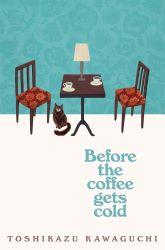
“Before the Coffee Gets Cold” is a story about a cafe that can send you back in time, so long as you drink your coffee in a particular seat. A variety of customers come to the cafe to meet with people they’d otherwise have no chance to see. However, there are several rules. The two most important are that the present will never be changed and that the time traveler must return before the coffee gets cold.
Each story is interesting and heartfelt in its own right. My personal favorite was Hirai’s story about her sister, particularly because of how it was up in the previous stories. That’s another aspect of this book. These stories are all interconnected. Aside from the first woman, each main character is shown beforehand. This book also keeps the stories from being repetitive. There’s enough of a twist on each story, one woman wants to meet her husband who’s losing his memory. Another wants to express her feelings to her ex-boyfriend. All the reasons are different enough to keep the story fresh.
The characters are all likable too, although there are a few strange moments in the beginning. All of them are given a little backstory, but not much. All in all, it’s nice without being extraordinary.
This is a quick and cozy read that I’d recommend to almost anyone. Especially if you’re interested in speculative fiction.
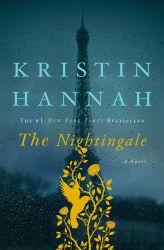
Originally I was interested in this book because it was highly praised among those who read it. It portrays two sisters and their lives in World War II. One named Isabelle and one named Vianne, it shows the different courses of their lives but in the end their own impact made on those around them. If you are interested in learned about women’s contribution in war this book is for you! I would recommend this book to anyone looking to expand their perspective on war, but be aware this book does touch on some topics that may be triggering. Overall, the Nightingale was a wonderful read that gave me more insight to women’s lives at the time and their contributions.
Grade 10
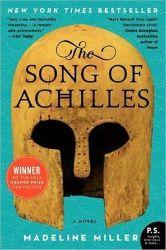
"The Song of Achilles" by Madeline Miller is a stunning and deeply moving retelling of the Iliad that captivates from beginning to end, earning a solid 5 stars. Miller skillfully weaves a tale of love, friendship, and heroism, focusing on the relationship between Patroclus and Achilles. The narrative beautifully explores the complexities of their bond, providing a fresh perspective on the legendary characters. Miller's prose is both lyrical and evocative, effortlessly transporting readers to the ancient world. The emotional depth and nuance she brings to the characters make this retelling a triumph, resonating with readers on a profound level. "The Song of Achilles" is a masterpiece that seamlessly combines rich storytelling with timeless themes, earning its well-deserved 5-star rating.
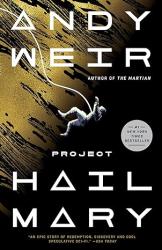
This book is amazing! it has twists and turns, and the author is amazing! The science is explained well enough that anyone can understand it. Also, whenever you think the book is done, it just goes, 'Here's another problem, Main character! good luck!" Also, the book is in the format of a 'White Room" story, meaning that the character has no memory, and has to figure everything all out, along with you! Would recommend to any sci fi fan over the age of 12.
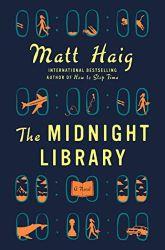
TW: A main theme of this book (and thus the review) is suicide. If this topic makes you uncomfortable, I would suggest finding a different book.
“The Midnight Library” is a story about Nora Seed, whose life has not gone how she’s expected. Worse yet, she feels as though it’s all her fault and her regrets weigh heavy on her. One night she decides to end her own life, but she wakes up in a library with her elementary school librarian. That’s when she gets the opportunity to live the lives she could have led if she’d made different decisions.
As the story goes along, we see many of Nora’s alternative lives. Some of them are just as disastrous as her regular life (her best friend dies, her husband cheats on her). Others are nearly perfect, but can’t be truly satisfying when she didn’t create them. I was glad that some of the alternate lives were good, otherwise it would have seemed like Nora’s original life was simply the lesser of two evils. All of them are interesting to read about. Another interesting aspect of the book is the library itself. The author knows when to reveal information and when to keep things vague.
There aren’t many characters to keep track of. Nora is the main character, and the reader gets a good sense of her interests and aspirations through her various lives. Her friends and family all get a decent amount of depth as well, though they’re not in focus most of the time.
I can’t pretend that I really resonated with the message of the book. I would have preferred if it focused a bit more on the good things that could happen in Nora’s future rather than the good things that happened in her alternate lives. However, that could be a problem exclusive to me.
Overall, I would recommend this book to almost anyone. It’s a fast read and a good story.
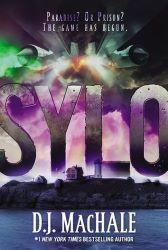
This is the first book of an awesome Apocalyptic trilogy. This book starts out with a high school football player named Tucker Pierce, who lives a quiet life on Pemberwick Island,Maine. He is also perfectly fine being the backup for a kid named Marty on the team. As a game goes on, Marty seems to be having the best game of his life, when he scores a touchdown and just drops dead. The narrator describes the whole story in past tense, and describes that as "the first death". This is the start of a "real page turner" of a story. As that week goes on, Tucker and his friends (Quinn and Tori) find out that a U.S. military branch invades his island.This story goes on to describe how The trio find out what the heck is going on, and in three books! It is a very good book, and I strongly recommend it. Just don't read it if you do not have access to the other books, because you have to read the whole series.
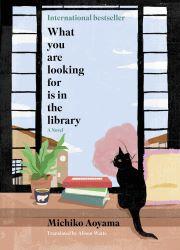
"What You Are Looking For Is in the Library" is a book about a library connected to a community center and the unusually perceptive librarian, Sayuri Komachi. The book is told through five stories of people . Along with the books they came for, Mrs. Komachi gives them an unrelated book and a felt gift. This leads them to discovering new perspectives on their problems and their lives.
All the characters in this book are delightful. Since there are five stories, each with a different main character, it would take too long to go over all of them. However, the standouts for me were Tomoka, Natsumi, and Mrs. Komachi herself. Tomoka was relatable in her struggles, but also had a proactive nature that made her likeable. Natsumi has an interesting story about motherhood that isn't seen much in modern media. And of course Mrs. Komachi tows the line between mysterious and friendly in a charming way. Every once in a while there will be a character that appears in multiple stories, and the crossovers are pleasant without being distracting.
The stories themselves are all quite simple. Someone receives insight after reading a book, usually talking with friends and neighbors as they decide on their life's path. Though they're all quite short, none of them feel incomplete or rushed.
I would recommend this book for people looking for a comforting read or a story about the power of books.
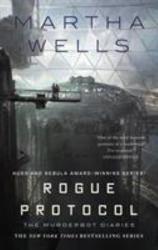
By this point in the Murderbot Diaries series, I'm used to the short length of these stories. I appreciate that there's still an overarching plot that the books are driving toward, but the bite-size adventures of the sentient AI robot are also entertaining by themselves. Now that the series is in a good groove by book three, I was glad to see the introduction of a foil to compare and contrast the main character's interactions with the humans.
The rogue SecUnit continues to find himself deeper into the shady dealings of humans, but with each interaction, he's finding it harder to hide who he is and what he's doing. That these "missions" he gives himself are a significant amount of effort for someone who would much rather be lazy and just watch vids all day seems contradictory until you realize that it's great character development—even if it's subtle. Raising the stakes with each book also helps to make this one the best one in the series to date. There has to be a point soon when things become fully out of the SecUnit's control.
It's always interesting to me how the characters that have stuck with me through the series (aside from the main character of course), are the other AIs and robots. In Rogue Protocol, I immediately fell in love with Miki, who showed the other side of human-robot relations as a pet/mascot. The contrast between Miki and the SecUnit was a fantastic plot device and I would love some kind of spinoff with those two characters (or characters like them). Unfortunately, the abrupt ending to this book left me a little disappointed, as I felt there needed to be more time with the characters to get their full range of emotions after the climax.
A great book filled with contrasting human-robot relations, I give Rogue Protocol 4.5 stars out of 5.
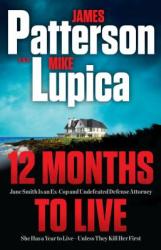
Jane Smith is a defense attorney, trying to defend a probably guilty client of three murders. Gripping, well paced with great character development.
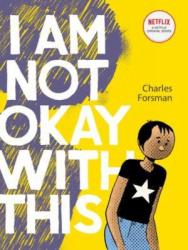
I'm open to a lot of visual styles for graphic novels. It can be what elevates a mediocre story to something profound, but it can also tonally clash with the message and leave a muddled mess. Storytelling in this format is a challenge to pull off and few have been able to do so successfully. I Am Not Okay With This unfortunately falls into the other camp here. Even if this were just a novel without the "graphic" part, there's not much to recommend it.
Filled with cliches about what it's like to be a teenage girl, I Am Not Okay With This suffers from the "men writing women" trope. None of the interactions felt believable or realistic. Instead, they seemed forced through what a man thought these interactions should be based on minimal or merely pop culture research. None of it had the feel of anyone who has lived as a teenage girl in similar situations—psychic powers notwithstanding. This was why it leaned so heavily on the tropes commonly associated with girls in puberty and the male fetishes that go along with it.
I wasn't sure if this was trying to be edgy by focusing only on heavy subjects like sexuality, bullying, and suicide, but the simplistic art style felt too childish to accomplish any of these goals with any level of gravitas. There wasn't even a satisfying conclusion to anything, which would only be frustrating if this book wasn't such a quick read. I'm sure it's less of a time commitment than watching the Netflix show, but I still probably wouldn't recommend it (even if I haven't seen the Netflix show to compare against).
A mismatched graphic novel obviously written by a man, I give I Am Not Okay With This 2.0 stars out of 5.
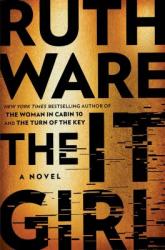
I love Ruth Ware but this was so disappointing I didn't even finish it, and I really tried. I was just so frustrated with the format and the characters that I no longer cared about the conclusion.
The back and forth format was really repetitive and annoying, and the characters all felt thin. The main character only had two modes, panic attack or despair, but the way it was written it was impossible to have empathy for her.
Her anxiety became very formulaic. The supporting characters were all very predictable, which is not good in a whodunit. I really hope she's back on her game with the next one as I liked every one of her books until now.
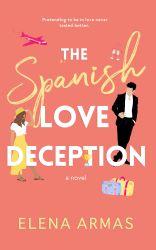
Lovable characters, an amazing plot, swoon-worthy chemistry, and a captivating writing style, what more could one ask for in a rom-com narrative? Like seriously. And those beautiful ideas are immaculately expressed in The Spanish Love Deception by Elena Armas. This book stole my heart—a truly well-done teaser love story. From the first page, Armas unfolds every parcel of the story with perfection, leaving just enough time before uncovering another equally interesting idea. The classic enemies-to-lovers trope is perfectly applied as mysterious and stone-cold Aaron meets open and bubby Catalina. At first, the motives are questionable; you’ll find yourself asking, “why would Catalina be soo adamant about finding a fake boyfriend to bring home for a wedding?” and if she hates Aaron with that much ferocity, “why did she put that aside and take him?” But as the plot unfolds, everything makes sense in a kinda sick way, and motives come to life. And through it all, Aaron and Catalina could not be more wholesome. They frankly stole my heart. It is honestly an emotional rollercoaster that I wish would never end. When it finally did, it was perfect.
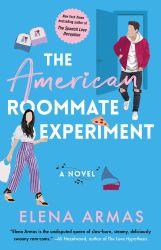
What is a better way to start a relationship with someone, your best friend’s cousin, than calling the cops on them? Answer: There is none, especially if it's a rom-com novel—the perfect first encounter. This is what happens to Rosie Graham when she unexpectedly comes across Lucas Martin, her best friend’s cousin, “breaking into her out of town friends apartment” and calls the cops. New flash, he was not breaking in; he had a key, but little did she know that this was the start of an excellent relationship and a well-written, feel-good book because everyone needs a decent, feel-good book in their lives, right? Well, at least for me, that book is not The American Roommate Experiment by Elena Armas. I mean, yes, technically, the novel is a feel-good book, but it is also so much more. It's about overcoming your past and moving forward. It’s about loving yourself and supporting others. It’s about allowing yourself to rely on others. The American Roommate Experiment is an emotional rollercoaster bundled up into 400 pages. That made me feel anywhere from devastated to ecstatic, to awe, to hate, and to love in a single chapter.
That being said, I didn’t enjoy The American Roommate Experiment by Elena Armas as much as its prequel, The Spanish Love Deception. I found the plot too slow, even for a slow-burn-type book, and overly stacked with tropes. While I enjoy a good friends-to-lovers trope, in this case, I found it extremely frustrating, and generally, I found that Lucas and Rosie lacked the necessary chemistry. I mean, water and oil have better chemistry. Both Lucas and Rosie would, in my opinion, make better friends than lovers, and the romance piece felt like an afterthought in the plot and their relationship. It is still a well-written novel with fascinating characters and a well-needed message. I adored the character development that progressed but found the romance part severely lacking. The best way I would describe The American Roommate Experiment is a modern feel-good comedy, and if that is what you’re looking for? Great. It is a perfect read, but don’t go looking for a romance novel.
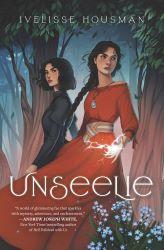
"Unseelie" is a fantasy book by Ivelisse Houseman. It centers around Iselia 'Seelie' Graygrove, an adopted changeling and her sister Isolde. One day a heist goes wrong and she's stuck with a magical compass in her arm. However, this gives the sisters an opportunity to team up with Raze and Olani to find the treasure of the Wildline family.
The characters are all fairly well done, if not a bit dull. Raze and Olani were the highlights for me, both having their hidden depths teased without being drawn out. Though I didn’t find Isolde particularly interesting, she was likable and understandable. Seelie was a bit unpleasant at times, but I always ended up liking her. The plot was a bit dull in the first half. It often felt like a car that drove for a few miles before sputtering out. Or else it felt more like a checklist than a story. However, it found its footing by the time they entered the fairy realm. After that the plot was engaging and hard to put down. It felt like the dreamy fantasy world I was looking for.
Now, the main selling point of this book is the autistic representation. Though I am autistic, obviously I don’t speak for all autistic people (so keep that in mind). Having an autistic protagonist at all is definitely amazing. I can count on one hand the number of confirmed autistic characters I’ve seen in media. However, I was a bit disappointed in how Seelie turned out. Though this book was intended (as written in the author’s note) to be a story about autism, it didn’t feel like one.
Seelie feels like an outsider, but that’s more due to people thinking she’s dangerous than thinking she’s incapable or strange. Her arc is more about trying not to hurt people than trying to relate to them or feel useful to them. Furthermore, the story tries to address the topic of parents feeling that their children have been ‘stolen away’ by autism. However, in a world where changelings literally replace human children, the argument loses a bit of power. There are occasional references to Seelie avoiding eye contact, having trouble with social cues, and having difficulty with loud areas, but these are always brief and never impact the story much. That said, there are smaller moments that capture autism quite well.
Finally, I found the writing style to be distractingly anachronistic. It felt more like watching two tik-tok users collab than reading an epic story about the fae. Then again, many people enjoy that kind of writing. So maybe it's just me.
Overall I found this to be an enjoyable read that slightly disappointed me. However, I fully intend to pick up the second part as soon as it hits the shelves. Not only because I hope the author has improved her craft, but because I thoroughly enjoyed myself.

Five Total Strangers begins with our protagonist, Mira on a plane ride back home just before Christmas. There is a large winter storm approaching and all flights are cancelled, so in desperation Mira and some other college - age passengers rent a car in an attempt to reach their destinations. Woven between the main plot, we read letters sent to Mira from a mysterious person she met while in the hospital around the time of her aunt's death. The person's letters take a very... stalker-y tone... and they appear to have never reached their destination. As the story goes on, the sender grows more and more desperate alongside the distress of her party.
The story has well written language and description, and it was easy to visualize the setting and the mental state of the protagonist. However, it is supposed to be a sort of mystery? It's hinted that there is a saboteur among Mira and the four strangers, but it was fairly easy for me to figure out who it was early in the book, which made the "twist" at the end feel over dramatized and the red herrings obvious. Basically, the book tries to sell "I don't know who to trust and there's nowhere to go!"but it didn't really meet my expectations. The main character Mira has no real agency, which makes sense, because she's trapped in a snowstorm, but at the same time, the book doesn't really analyze the sense of powerlessness in a situation out of your control. Mira just kind of feels uneasy and goes along with whatever the rest of the characters say, and the book doesn't really address this.
Also, the end was unrealistically soon after the climax in my opinion. After the "twist," the rescue came so quick that it made me wonder, "why could this not happen sooner?..." It just felt irrational compared to the rest of the story, and this narrative whiplash lowered my opinion.
Despite my qualms with the story (it might just be over-analysis on my part) I enjoyed this book. It kept me entertained for at least a day, and the author was decent at evoking dread by constricting the escape routes of the story's environment. I'd recommend this book if you enjoy quick thrillers for a snowy day.
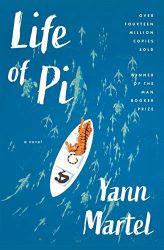
"Life of Pi" by Yann Martel recounts the major events of Pi's life before going into detail about him being stranded on a lifeboat with a tiger. It has frequent anecdotes about zookeeping and religion, especially near the beginning. The main character, Pi Patel, is an extremly likable main character. Though he is not particularly colorful or eccentric, his devotion to God and resilience make the audience instantly emphasize with him. Richard Parker, the tiger, is also made interesting. Though he doesn't do anything out of the realm of possibility, it's always left unclear how he's going to respond to the current situation. The rest of the characters are not particularly deep, but they all serve their purpose.
The plot is fairly simple, focusing more on describing Pi's struggle in detail than twists and turns. Sitting on a boat for seven months is hard to make interesting, but this book rises to the occassion. Every change in circumstance is explored, and Pi has to respond in creative ways. In between the speeches about how to train a tiger and why a hyena is dangerous, there are themes about faith that are masterfully done. While I can't say I agree with everything that's said about religion, I do appriciate how it is explored.
I would reccomend this book to animal lovers, people who enjoy survival stories, and anyone looking for a unique story that will keep them hooked.
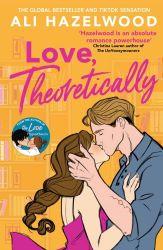
Okay, so the plot may be a little silly. A desperate adjunct physics professor, Elsie Hannaway, makes up for her pathetic paycheck by becoming people’s fake girlfriend. Does she enjoy her jobs? No. During the day, she deals with pathetic and entitled college students who couldn’t care less about physics. At night, she people-pleases to make enough to live. All while living in a probably rat-infested apartment. Whoever said academia was easy? And when she finally might get an actual well-paying job at MIT, she runs into Jack Smith, the older brother of her favorite client. Who may or may not think she works at a library?
That being said, the classic enemies-to-lovers trope and the quirky, witty characters complement the plot perfectly. The chemistry between Jack and Elsie is palpable. Frankly, Love, Theoretically, brings out the uncontrollable laughter and wholesome feelings everyone needs. However, this is definitely not my favorite Hazelwood book, and out of all the protagonists of her other books, Elsie just didn’t make the same spark. Throughout the whole book, Elsie needs constant approval from those around her, and despite being a wonderful, smart person, she lacks self-esteem. And I mean, I get it; some people have trouble with self-esteem, but Elsie’s people-pleasing tendencies are taken to too much of an extreme. And Jack, the most wholesome, caring person, sends mixed signals the whole book. The “you don’t like me” phase was too drawn out and, at times, annoying. Still, I enjoyed the light, pleasant read like always.
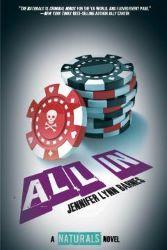
All In is the third book in The Naturals series. It takes place in Vegas instead of Washington D.C. and is actually focusing on a main secondary character instead, Sloane. The Naturals investigate a series of murders that take place in casinos around Las Vegas and learn that they may run deeper than they thought.
I really liked this book in the series. I liked how we got a story focusing on a secondary character instead of just focusing on Cassie like in the first two books. However, this book was longer than the other books and got a little bit boring in some parts, which is why I rated it a three stars. It was a really good and interesting story though and I’m looking forward to continuing the series!
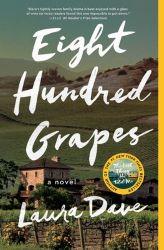
"Eight Hundred Grapes" by Laura Dave is an exceptional novel that effortlessly earns a well-deserved 5-star rating. Set against the picturesque backdrop of a California vineyard, the story intricately weaves together themes of love, family, and self-discovery. Laura Dave's storytelling prowess shines through, creating a narrative that is both emotionally resonant and utterly captivating.
The vineyard setting adds an extra layer of charm and uniqueness to the narrative, creating a vivid backdrop that complements the story's themes. The novel explores the complexities of family dynamics, the choices we make, and the impact these decisions have on our lives.
What sets "Eight Hundred Grapes" apart is its ability to balance romance, drama, and introspection seamlessly. Laura Dave's writing style is engaging, pulling the reader into the lives of the characters and making the book difficult to put down. Overall I found "Eight Hundred Grapes" to be a literary gem, offering a rich and satisfying reading experience that warrants the highest praise.
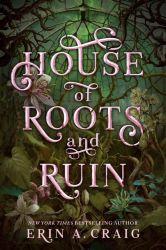
House of Roots and Ruin is an intriguing sequel to the popular novel House of Salt and Sorrow by Erin Craig. The previous novel primarily focused on the Thamus girls, with a particular emphasis on Annaleigh, as they delved into the mystery surrounding the death of their sister, Euliea. In contrast, the story in House of Roots and Ruin revolves around Verity, the youngest Thamus sibling.
The plot begins with Verity's journey to the mainland, where she visits Chantiule and Bloem. During her stay there, she receives a commission to paint a portrait of Alexander, the son of the wealthy Laurent family. However, as she spends more time in the family's mansion, she senses an underlying air of uncertainty and becomes curious about the family's enigmatic past.
As the narrative progresses, Verity uncovers several buried secrets that the family has been hiding, leading to betrayal and sparking chaos within the manor. She grapples with accepting her ability to see ghosts, which she had initially rejected. However, she eventually learns to harness her gift to uncover the Laurent family's secrets.
House of Roots and Ruin is an engrossing novel that captivates readers and keeps them on the edge of their seats. The author successfully weaves together a complex and suspenseful plot that explores themes of betrayal, loss, and family dynamics. The book is a must-read for anyone who enjoys House of Salt and Sorrows and those who are fans of the mystery and fantasy genres.
The book in question is an enthralling and captivating read that is a perfect choice for anyone who is just starting in the fantasy genre and wants to try out some mystery books. The plot of the book is structured in a way that keeps the reader on the edge of their seat as it advances with each chapter. The book is full of unexpected twists and turns, which adds to the overall excitement and thrill of the read.
One of the notable aspects of the book is how the story moves back and forth yet still manages to stay in line with how the story ends. This aspect of the book keeps the reader engaged and intrigued till the very end. The book is well-written and easy to follow, making it a perfect shallow swim for anyone new to the genre.
The book balances fantasy and mystery perfectly, making it a thrilling and exciting adventure for readers. The book's overall quality and the balance of its elements make it a perfect recommendation for anyone looking for a great read in the fantasy-mystery genre.
8th grade
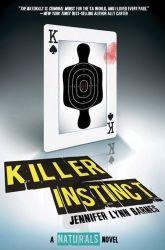
After all the events that took place six weeks ago, Cassie Hobbes is back to solving cold cases for the FBI. However, when a new killer arises and is showing techniques just like her friend Dean’s father, Cassie is thrown into a whole new world of detective work and solving cases.
I thought this was a great sequel to the Naturals series. Jennifer Lynn Barnes did a great job at revealing new plot twists and describing the specific ways that the Naturals work. I also enjoyed the way she kind of dumbs the cases down and makes it easy for teenagers or any reader to understand.
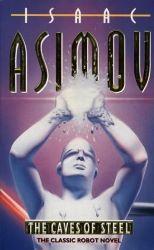
As someone who generally stays away from science fiction books, I was pleasantly surprised by this venture outside my comfort zone. Elijah Baley is the main character, living thousands of years in the earth's future. In this time period, robots have become commonplace and other planets have been commonplace. Tension has grown between earth dwellers and the residents of the other planets (referred to as spacers). There are also concerns about the increasing number and sophistication of robots. Elijah, though less extreme than many of his colleagues, is not immune to this prejudice, and is less than happy when he has to team up with R. Daneel Olivaw, a spacer robot, to solve a homicide.
The characters are not deep or complex, but they are consistent and interesting. All characters have a purpose in the story, and most of them change in some way by the end. Elijah is likable, perhaps especially so because he's allowed to fail. He's shown to be incorrect in many of his initial beliefs, and makes many false assumptions, but he retains good qualities throughout it all. R. Daneel is an interesting take on the robot archetype. Though he's shown to be effective in his job and capable of change, he lacks essential human qualities that Elijah must make up for. The side characters all have clear motivations, personalities, and are interesting without being obtrusive.
The plot strikes a balance between complex and easy to follow. There are a great deal of plot twists and dead ends, but the story takes its time and allows the reader to process everything. I hope I re-read this book one day, so I am able to look for clues to the culprit that I might have missed the first time around.
I have no overt critiques. The only bad thing I can say about this book is that it's not a deep philosophical experience. There are tcertainly hemes, but the book focuses more on excitement and intrigue than anything else. I would reccomend this book to sci-fi fans, and anyone looking to get into the genre.

"Turtles All the Way Down" is a young adult novel written by John Green. The story follows the life of Aza Holmes, a 16-year-old girl dealing with obsessive-compulsive disorder (OCD). Aza, along with her best friend Daisy, becomes involved in the mystery surrounding the disappearance of a billionaire named Russell Pickett. As they investigate, Aza also navigates the challenges of her mental health and relationships.
In my opinion, "Turtles All the Way Down" is a compelling and emotionally resonant novel, earning my rating of 3/5. John Green brings depth and authenticity to the portrayal of Aza's struggles with OCD, providing readers with a unique and empathetic perspective. The exploration of friendship, love, and the complexities of mental health adds layers to the narrative. The book's strength lies in its realistic characters, poignant storytelling, and the author's ability to address important themes with sensitivity. While some may find the pacing or plot elements challenging or dull, the overall impact and the way it tackles mental health make it a worthwhile and thought-provoking read.